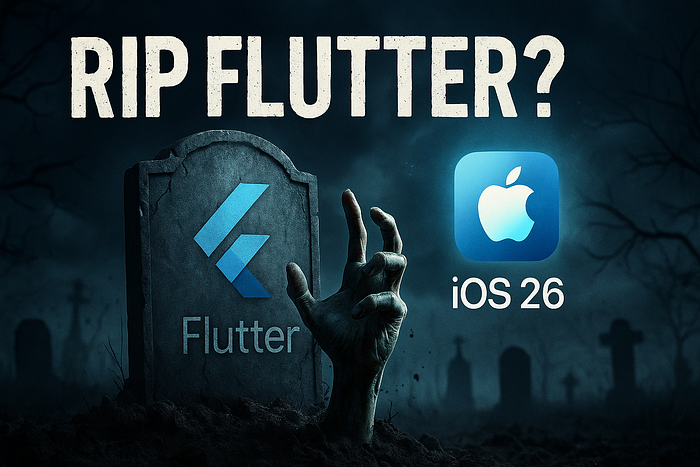RIP Flutter? Apple's iOS 26 (Liquid Glass) Just Changed the Game — What Happened to Cross-Platform Languages?
Not a member? Click here to read free. and subscribe.
"Flutter is dead." "React Native is done." "Apple killed cross-platform development."
You've probably seen headlines like these recently. And if you've been in the mobile development space for even a year, you've felt the heat of this debate. Now with iOS 26 and the shiny new "Liquid Glass" design system, that heat just turned into a wildfire.
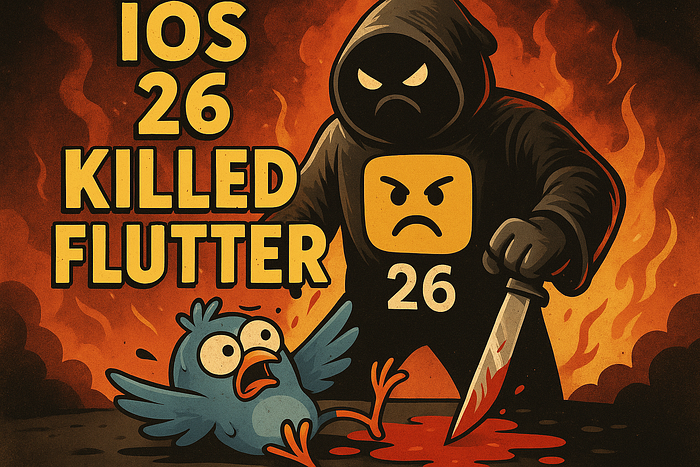
So, what's going on? Is Flutter really falling apart? Why is React Native not making headlines anymore? And more importantly — what happened to the big dream of write once, run everywhere?
Let's break it all down — every detail:
Chapter 1: The Cross-Platform Dream — A Flashback We Needed
Flutter promised buttery-smooth UIs and one codebase. React Native gave JavaScript developers a ticket to iOS land. Xamarin gave .NET developers a lifeline. We believed we were heading toward a world where one team could build for both iOS and Android without touching Xcode or Android Studio.
And for a while, it worked.
Startups could move fast. MVPs could ship in weeks. Cross-platform development wasn't perfect, but it was practical.
Then came Apple's iOS 26.
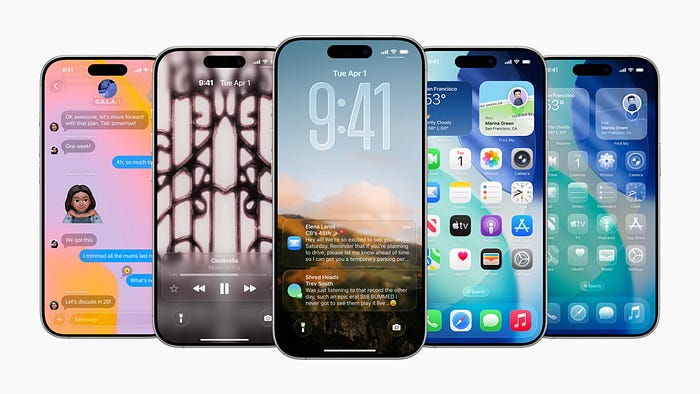
Chapter 2: What is iOS 26 and Why Is It Disruptive?
Apple introduced iOS 26 with a bold new concept: Liquid Glass UI.
This isn't just a design refresh. It's a foundational overhaul of how UI is rendered. Liquid Glass is built on top of SwiftUI 3.5 and MetalCore. This system leverages real-time rendering layers that adapt based on environment, screen curvature, haptics, and even ambient light.
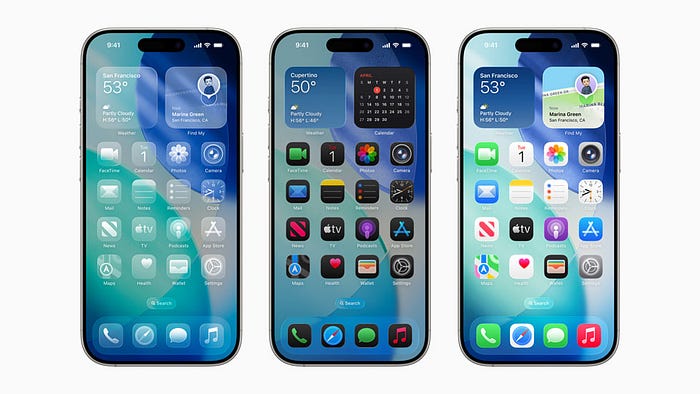
Let that sink in.
Every button, label, and gesture is now reactive — not just in code, but in physical interaction. This means apps written in native Swift have access to a deeper level of hardware integration that simply can't be expressed through cross-platform abstraction layers.
Chapter 3: Why Flutter's Architecture Doesn't Mesh
Let's talk Flutter — because this is where things get messy.
Flutter renders every pixel using Skia, its own rendering engine. It doesn't use native iOS components like
UIButton,UILabel, orUITextField. Instead, it draws them manually.
This was Flutter's strength — it made apps look the same on Android and iOS. But in iOS 26, it's a weakness.
Apple's Liquid Glass components now respond to physical interactions — pressure, motion, screen tilt. A button isn't just a rectangle anymore. It has depth, light dynamics, and motion curves. Flutter can't tap into those new layers because it doesn't use UIKit or SwiftUI — it paints its own layer on top.
In short: Flutter apps look outdated on iOS 26, and there's nothing devs can do about it unless Flutter rewrites their engine.
Chapter 4: React Native — Holding On, But Just Barely
Now let's compare with React Native.
React Native bridges JavaScript to native components. That means a Button in React Native can map directly to a UIButton under the hood. It can still (in theory) inherit new UIKit behaviors, including Liquid Glass enhancements—but with caveats.
React Native relies heavily on the JS Bridge, which introduces latency and doesn't support full SwiftUI integration. Most React Native apps don't use SwiftUI at all, because SwiftUI doesn't expose a stable public API for dynamic JavaScript interaction.
And with iOS 26, Apple made SwiftUI even more native-only. Features like Dynamic Glass Layers or Sensor-Aware Views are impossible to use from JavaScript. You're locked out unless you write native Swift code or use Swift Packages.
So React Native survives… but with a limp.
Chapter 5: But Wait — What About the Edge Cases?
1: Can I still ship Flutter apps to the App Store?
Yes, you can. Apple hasn't blocked Flutter. But your app won't "feel" like an iOS 26 app. It'll look like it's stuck in iOS 15. Users may not notice at first… but when 90% of apps start glowing, pulsing, and reacting to physical movements — and yours doesn't — it'll stand out in a bad way.
2: Can Flutter add support for Liquid Glass?
Not easily. Flutter's Skia engine would need deep re-architecture to render with Metal and replicate Apple's motion layers. It's possible, but it would no longer be Flutter as we know it. Plus, Apple provides no public API to access Liquid Glass behaviors directly.
3: What about performance?
Flutter has always been fast — but now it's visually outdated. React Native may get slight UI improvements from UIKit, but the JS Bridge still bottlenecks it. Native Swift/SwiftUI apps will outperform both — both in render time and battery efficiency — especially with iOS 26's Metal GPU Boost.
4: Can React Native adopt SwiftUI?
In theory, yes. But the integration is fragile and experimental. Bridging React components into SwiftUI views is hacky at best and requires custom code per component. For large apps, this is not scalable.
5: What about other frameworks? Xamarin? Kotlin Multiplatform?
Xamarin is fading. Even Microsoft is encouraging MAUI, which is still catching up. Kotlin Multiplatform is promising, but mostly for logic sharing, not UI. It still relies on platform-native UIs — so you'll end up writing SwiftUI anyway for iOS.
Chapter 6: Apple's Silent Message — Native is the Future
Apple never said "we're killing cross-platform," but they don't need to. Their message is in the APIs they release, the private frameworks they withhold, and the advantages they give native developers.
iOS 26 is a love letter to developers who go all-in on Swift and SwiftUI. They're saying:
"If you want the best performance, visuals, and user experience — build natively."
Chapter 7: So What Should Devs Do Now?
Here's the hard truth:
- Flutter is still great for MVPs, Android-heavy apps, or if you need quick iteration.
- React Native survives in enterprise apps with heavy investment — but it's slowing down.
- If you're targeting premium iOS users or futuristic UIs — go native. Full stop.
If you're a cross-platform dev, start learning SwiftUI. You don't have to abandon Flutter or React Native overnight, but don't ignore the writing on the wall.
Final Thoughts: Is This the End?
Not necessarily. Cross-platform development won't die — it'll evolve.
But the dream of perfect parity between iOS and Android? That's fading fast. Especially with Apple betting so hard on hardware-software harmony.
Liquid Glass isn't just a UI change. It's Apple's subtle way of saying:
"If you want to shine, play by our rules."
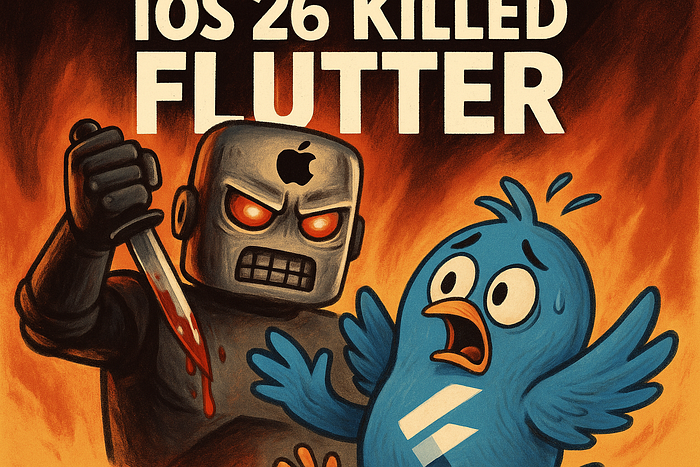
And right now, that means Swift. That means native. That means embracing the Apple ecosystem deeper than ever before.
Continue read my other articles:
Thank You for Reading!
✅ "Follow me on Medium to never miss an update!"
If you found this content helpful, feel free to show your support with 👏 claps! 😊 Your encouragement keeps me motivated to share more insights
